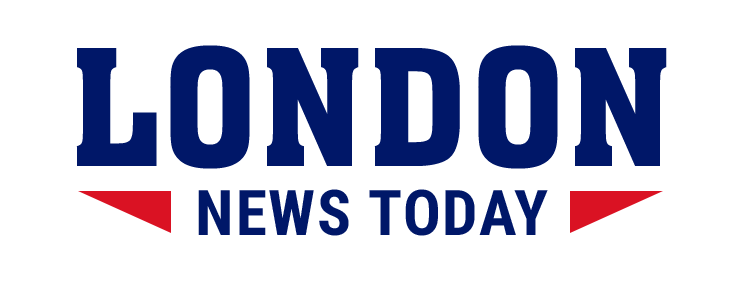How Much Do First-time Home Buyers Usually Get Approved For? – [An Overview of First-time Home Buyer Programs]
What’s the average down payment on a house for a first-time buyer?
According to data from the National Association of Realtors, the median down payment for first-time home buyers was 6% in 2018.
This means that half of all first-time buyers put down less than 6%, while the other half put down more. The average down payment was slightly higher for buyers over the age of 30, at 7%.
However, it’s important to remember that these are just averages – your own down payment may be more or less depending on your circumstances. talk to a mortgage lender or financial advisor to get a better idea of how much you will need to save for your own home purchase.
First-time home buyer down payment strategies
1. Using gift funds to cover your down payment
Many first-time home buyer programs allow buyers to cover their entire down payment with gifted money, and this can be a great way to stretch your budget.
Of course, you’ll need to make sure that you’re able to meet all of the program’s other requirements, but if you can, using gift funds can be a great way to ease the financial burden of buying a home.
2. First-time home buyer down payment assistance programs
Down payment assistance programs can also be a great way to help cover the closing costs. According to a recent report, there are over 1,700 down payment assistance programs currently available to first-time home buyers across the country.
These programs provide anywhere from a few hundred to several thousand dollars in funding, and can be used for a variety of purposes, including improvements and repairs, establishing an emergency fund, or simply covering the down payment.
While the availability of these programs varies by state, the report found that nearly every state has at least one program currently in place.
For potential home buyers who may be struggling to come up with the necessary funds, these programs can be an invaluable resource. Furthermore, many of these programs are designed to help low- and moderate-income individuals, making homeownership more attainable for a wider range of people.
First-time home buyer programs:
1. FHA loans (Federal Housing Administration)
FHA loans are designed to help low-income borrowers secure financing for a home purchase. One of the key benefits of an FHA loan is that it only requires a 3.5% down payment.
This can make it much easier to save up for a down payment and still have money left over for other expenses.
In addition, FHA loans are available with both fixed- and adjustable-rate options, giving borrowers flexibility in choosing the loan that best suits their needs.
2. VA loans
VA loans are one of the many benefits available to veterans and active-duty military personnel. These loans are guaranteed by the Department of Veterans Affairs, and they can be used to purchase a primary residence with no down payment.
Additionally, VA loans have more relaxed credit requirements than conventional mortgages, making them an ideal option for home buyers.
These loans also do not require homeowners insurance, which can save borrowers hundreds of dollars per month.
3. USDA loans
The USDA Rural Housing Service (RHS) provides direct and guaranteed loans to people with a less-than-perfect credit score. Direct loans are made through the RHS, while guaranteed loans are made through approved lenders.
The RHS also offers a Mutual Self-Help program, which allows groups of low-income families to work together to build their own homes. To be eligible for a USDA loan, you must meet certain income and credit requirements, as well as live in an eligible rural area.
4. Conventional 97 loans
A Conventional 97 loan is a mortgage that is available to first-time homebuyers and offers a low down payment option of just 3%(compared to a conventional loan that requires at least 20%). Conventional 97 loans are fixed-rate mortgages, which means your interest rate will never increase over the life of the loan. This can provide peace of mind for borrowers who are worried about rising interest rates.
Moreover, the Conventional 97 loan does not require private mortgage insurance (PMI), which can save borrowers hundreds of dollars each month.
If you are a first-time homebuyer who is looking for a low-down payment option, a Conventional 97 loan is definitely worth giving a try.
5. HomeReady and Home Possible mortgage
HomeReady and Home Possible are two of the most popular options. With HomeReady, buyers can get up to 97% financing, which can help with both the monthly payment and the mortgage insurance premiums.
Meanwhile, Home Possible offers up to 95% financing, making it another great option for purchasing expensive properties. Whichever program you choose, be sure to do your research and compare offers to get the best deal possible.
Benefits of smaller down payments
A smaller down payment frees up cash that can be used for improvements and repairs. In addition, it leaves room in the budget for an emergency fund, which can come in handy if unexpected repairs are needed.
Finally, a smaller down payment may make it easier to qualify for a mortgage, since lenders typically require a lower loan-to-value ratio for borrowers with less equity in their home. For all these reasons, a smaller down payment can be a smart financial decision.
Will a down payment lower your monthly payments?
The monthly mortgage payment is one of the most important factors to consider when buying a home. A down payment can lower your monthly payments, but it’s important to understand how it works.
When you make a down payment on a home, you’re essentially paying for a portion of the home upfront.
This means that your monthly mortgage payments will be lower because you’ll owe less on the mortgage loan. However, it’s important to talk to a real estate agent to understand how much of a down payment you should make.
They can help you determine how much you can afford and what monthly payments will work best for your budget.
The Bottom Line
For many people, the biggest hurdle to buying a home is coming up with a down payment. While 20% is still the standard, there are a number of loan programs and options available that can help first-time homebuyers put down less.
The key is to do your research and find the option that best suits your needs. Whether you take advantage of a government program or get help from family or friends, there are a number of ways to make your dream of homeownership a reality.
So don’t let the down payment stand in your way – with a little bit of planning, you can make it happen.


